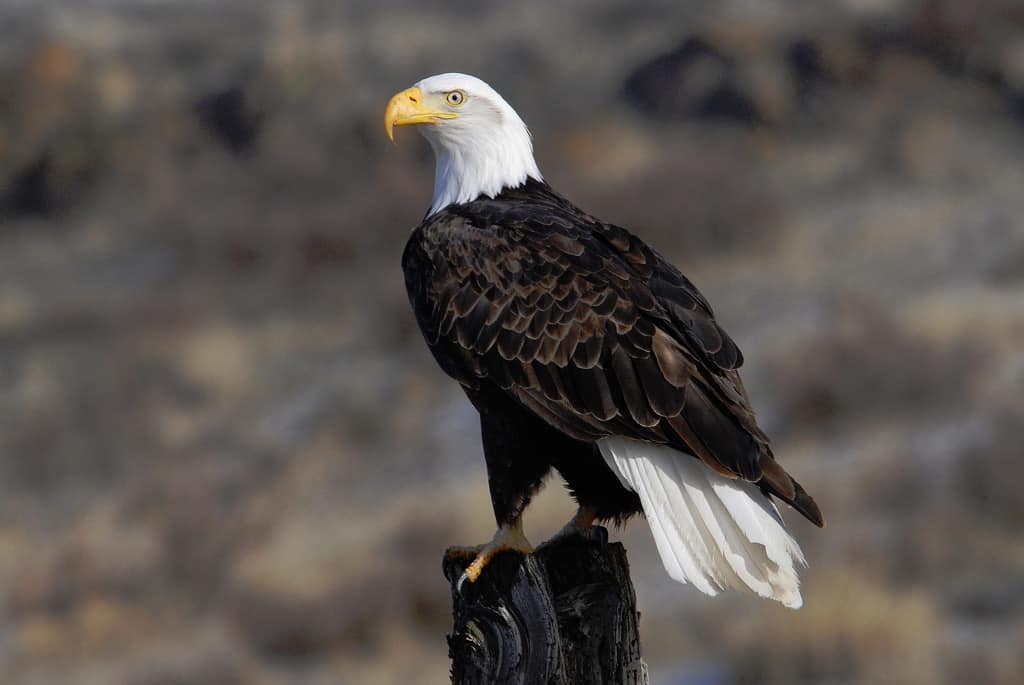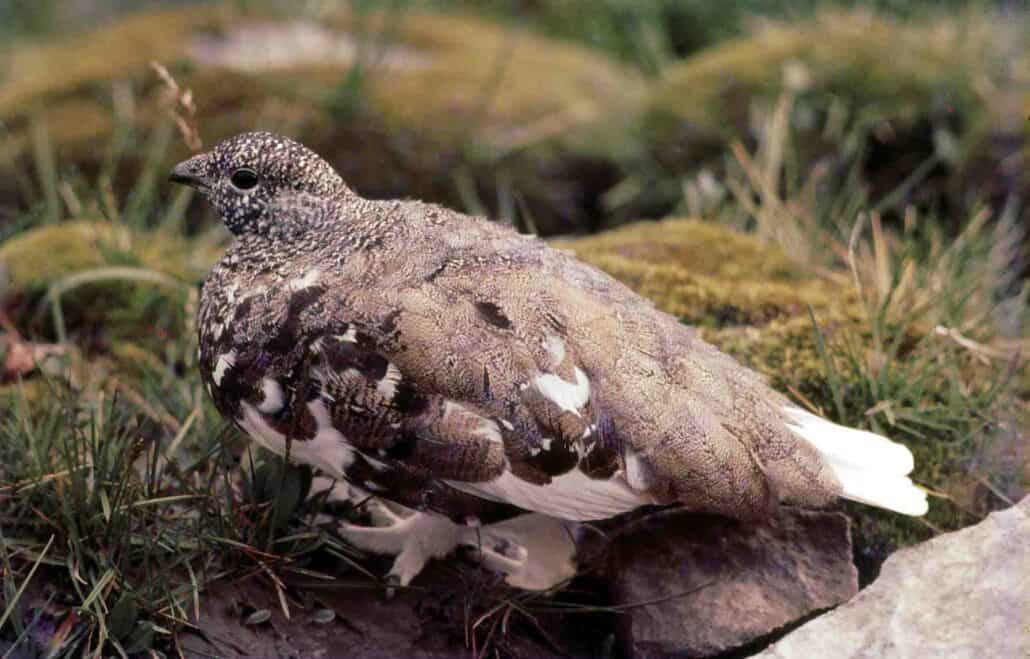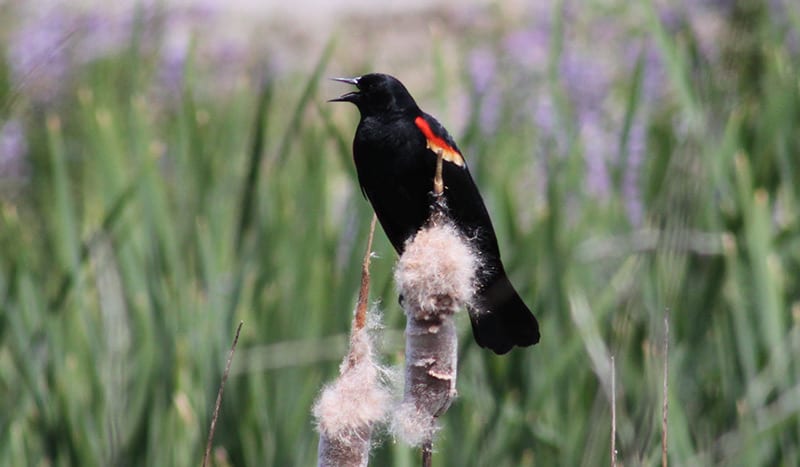Winter Birds of Missouri (December, January, February)
What better place to start a life list, a yard list, a county list, or a state list than from the comfort of your living room in winter? Take advantage of those Missouri winter birds that come to feeders and munch patiently while even the rawest rookie observer has a chance to make a positive identification.
And by merely looking up a backyard bird watcher can add to the yard list. The average central Missouri air space might produce crows, turkey vultures, chimney swifts, Canada and snow geese, nighthawks, barn swallows, american kestrels, and red-tailed hawks.
Winter feeders offer a great opportunity to really get to know a wide variety of bird life. You learn the little things, like who walks and who hops, what bills handle what seeds, what birds don’t eat seeds, which birds eat suet, how thin-billed birds open seeds, what species are most dominant, and what paths different birds follow to the feeder.
The winter feeder is a great opportunity to study field marks, make notes, to learn differences in plumages of each species and the differences in plumages of similar species—differences that will be easily recognizable in the wild as a birder progresses in knowledge.
Winter is the time for Bird Observation 101. (And don’t forget the water.)
This is also a good season for home building. Bluebird houses, wren houses, wood duck nest boxes, and, for those more motivated construction engineers, purple martin hotels, all need to be ready for early spring placement.
Winter is also the time for joining a Christmas Bird Count and renewing friendships with all your summer birding friends.
Christmas Bird Counts are quite popular in the state and prove that Missouri is an excellent spot for winter birding in the upper Midwest. Several of the counts—Mingo, Columbia, Four Rivers (Nevada), Kansas City, Squaw Creek, and Taney County all exceed 80 species, with Mingo’s 96 species tops in recent years.
What birds should you expect to see in winter? In 2002–03, a total of 143 species were found statewide on CBC’s. Birds found on at least 20 of the 27 counts in the state were great blue heron, Canada goose, gadwall, mallard, bald eagle, northern harrier, sharp-shinned and red-tailed hawks, kestrel, wild turkey, bobwhite, rock and mourning dove, great horned and barred owl, belted king-fisher, red-headed, red-bellied, downy, hairy and pileated woodpecker, yellow-bellied sapsucker, northern flicker, blue jay, crow, horned lark, tufted titmouse, brown creeper, Carolina wren, golden-crowned kinglet, eastern bluebird, robin, mockingbird, starling, cedar waxwing, tree, song, fox, swamp, white-throated, and white-crowned sparrows, dark-eyed junco, cardinal, red-winged blackbird, brown-headed cowbird, house finch, American goldfinch, and house sparrow—a total of 48 species.
Open water makes a huge difference in the winter bird populations. In 2003, there were snow geese on 17 counts and 517,000 geese remained in the state at year’s end.
Winter becomes a hit-and-miss thing for the state’s birders until they get in the field. They never know what northern visitors to expect. Some years the state is invaded by evening grosbeaks, pine siskins, crossbills, redpolls, occasional goshawks, prairie falcons, snowy owls, and northern shrikes. In other years, none of the above will appear.
One of the interesting questions of identification occurs in a band across the state where the Ozarks merge with Glaciated Plains.
Black-capped chickadees, the northern species, often drift into the territory of the Carolina chickadee, the southern species. Both species look quite alike, but their vocalizations are quite different. Guess what! Black-caps occasionally learn to mimic Carolinas. Tufted titmice don’t help either—they flock with both species.
So, if you need a good ID project to challenge your skills, find a Missouri woodlot in January and spend a couple of days with the chickadees.
Huge flocks of blackbirds, primarily redwings, but loaded with starlings, grackles, cowbirds, and the occasional rusty, Brewer’s and yellow-headed blackbird, are often a problem, roosting in populated areas, leaving droppings, feathers and lots of noise. Most remain in the wild, however, and as many as 8 million have been found during the CBC at Squaw Creek, where both great-tailed grackles and yellow-headed blackbirds occasionally overwinter.
The skeins of birds returning in late evening to the refuge’s marshes are an amazing sight. The birds use at least five flight paths into the roost area and form an unbroken string for an hour or more. They share the area with northern harriers and short-eared owls.
One of the most interesting winter birding areas is located in Taney/Stone counties. A winter robin roost with up to a million birds can be found near Hollister, and large roosts of both turkey and black vultures near Table Rock Lake where yellow-billed and Pacific loons have wintered in recent years. Flocks of field sparrows are a surprise and, in January, you can run across blooming witch hazel, the state’s only winter bloomer. Spring will soon follow.
Riverlands Environmental Development Area and the Alton Dam area on the Mississippi River just north of St. Louis are great (but frigid) spots for gulls, ducks, and other waterbirds. Through the years the Alton Dam area has drawn winter birders to see pomeraine jaeger, Franklin’s, Bonaparte’s, Thayer’s, lesser black-backed, Iceland, slaty-backed, glaucous, Sabine’s, and greater black-backed gulls and black-legged kittiwakes. There’s a good chance to run across a flock of Eurasian tree sparrows along the banks as you scan the river.
And what of the state’s favorite bird, the St. Louis Cardinal? After November 1, they become dormant. Some migrate individually back to the areas where they were fledged; others choose to loaf in the St. Louis area, becoming winter residents and joining the many wild northern cardinals that abound in St. Louis in the winter.
Like the witch hazel, they stir after January 1, beginning the renewal of a new baseball season as they work to be ready for that brief February migration to Florida and the long summer ahead. And Missouri bird watchers, too, begin to anticipate a spring renewal and the return of their favorite spring migrants.




